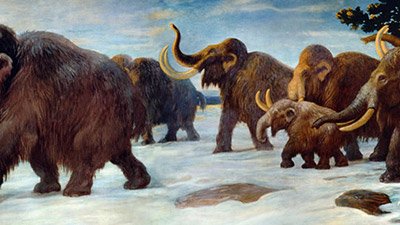The Web of Spider Evolution
BBC News: “Tangled Web of Spider Evolution” What was once “the world’s oldest spider” is now just a primitive version of the “web-spinning modern spider,” BBC News reports.
So what, exactly, is the difference? Spidery remains dubbed Attercopus, first described in 1989, had appeared to belong to a group of extinct spiders, the trigonotarbids, with the exception of appendages that looked like spinnerets. Based on that evidence, the University of Kansas’s Paul Selden and colleagues identified Attercopus as the oldest example of a true spider.
Now, the scientists have recovered more fossil material from the site, including Attercopus remains—with a “tail” attached. Upon further examination of the original fossil finds, the team decided what they had thought were spinnerets is actually “rolled-up pieces of cuticle, the animals’ external skeletal material.”
Without spinnerets, Attercopus would have been able to produce silk but not weave it.
Without spinnerets, Attercopus would have been able to produce silk but not weave it. Thus, the scientists believe it is part of a recently discovered primitive arachnid genus, Permarachne. “The thing that had been called the oldest known spider we have now shown is in fact more primitive than a true spider,” Selden said.
Words like “primitive” are rooted in the evolutionary mantra that what exists now is generally more advanced than what existed long ago, an idea rooted in the presupposition that evolution has allowed for more complex life-forms over long spans of time. The only evidence for this presupposition is evolutionists’ own interpretation of the fossil record as an accurate catalog of the history of life on earth.
As for the spiders, Selden explained:
“The puzzle about silk was this: we knew that it wasn’t used for making webs initially, for catching insects, because there were no flying insects when the earliest spiders were around. Here we clearly have a spider-like animal that could produce silk but didn’t yet have these flexible spinnerets for weaving it into webs; we think that this sort of spider would leave a trail of silk as it moved along, using it to find its way back to its burrow.”
For creationists, this find offers a bit of a riddle. On one hand, a spider that produced its silk for non-carnivorous purposes could be a legacy from a pre-Curse design. On the other hand, spinnerets could not have evolved through “upward” genetic mutations, so perhaps this variant of arachnid lost the genetic information for making spinnerets or was part of a now-extinct spider class who did not have spinnerets.
That said, we must caution that any speculation (on our part or on evolutionists’) is based on Selden et al.’s interpretation of these arachnid fossils, and fossil interpretation is notoriously subjective, as is revealed by some of Selden’s comments:
“They’re all microscopic fragments. What you’ve got is a jigsaw puzzle, with half the pieces and no picture on the box lid. You don’t know what it's going to be if you haven’t got all the pieces, so having these additional pieces means it changed the idea of what it was.”
So while this fossil can spawn thoughtful speculation, we must be careful to remember that using fossils to determine anything about origins—whether within the evolution or the creation framework—is risky and tentative.
For more information:
Remember, if you see a news story that might merit some attention, let us know about it! (Note: if the story originates from the Associated Press, Fox News, MSNBC, the New York Times, or another major national media outlet, we will most likely have already heard about it.) And thanks to all of our readers who have submitted great news tips to us.
(Please note that links will take you directly to the source. Answers in Genesis is not responsible for content on the websites to which we refer. For more information, please see our Privacy Policy.)
Recommended Resources

Answers in Genesis is an apologetics ministry, dedicated to helping Christians defend their faith and proclaim the good news of Jesus Christ.
- Customer Service 800.778.3390
- © 2024 Answers in Genesis






